By its surface area, El Salvador is the smallest country in Central America and it covers the territory of 21,041 square kilometres. The capital is called San Salvador and this morning, at the beginning of May 2008, I transferred by bus from San Salvador to village Joya de Cerén that is located northwest from the capital. The distance is around 40 km and the bus covered it in less than an hour. Admittedly, because of the wrong information in the guidebook that I had, I missed the correct stop where I was supposed to get off, so I had to walk a little bit, but I did not mind this in the least.
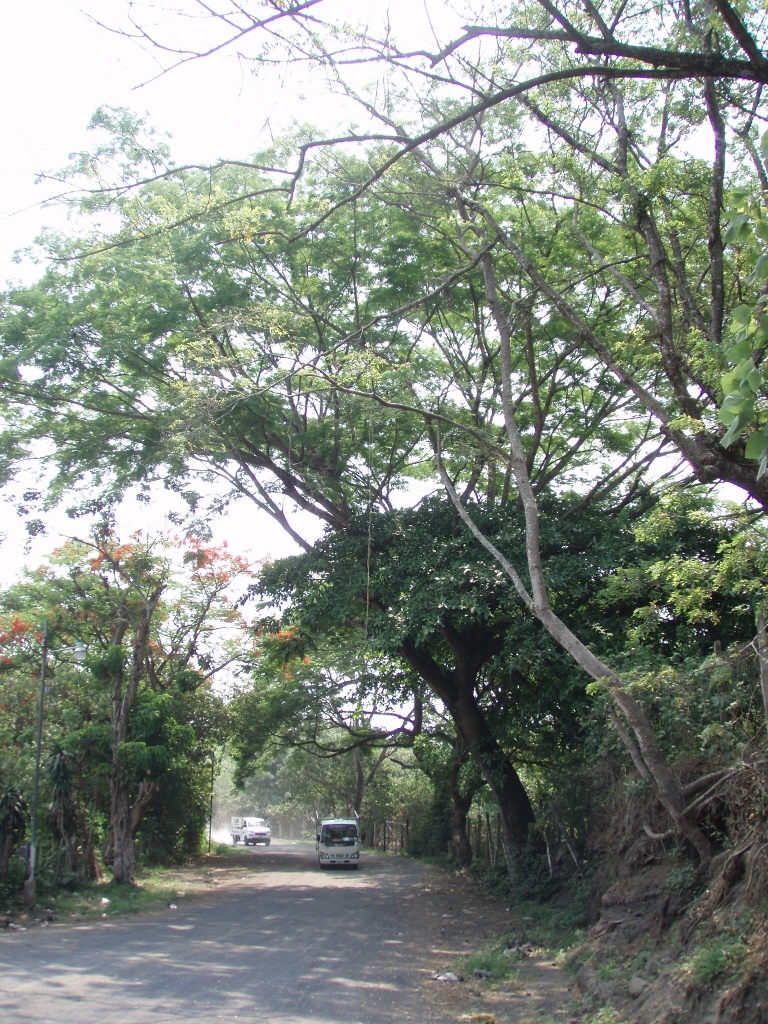 The road I walked on my way to the archaeological site
The road I walked on my way to the archaeological site
Moreover, I was actually very glad and found it interesting to be where I was and that was somewhere in the middle of the country, outside the big city. So, it was not that I just ran through El Salvador, but in fact I even did some sightseeing.
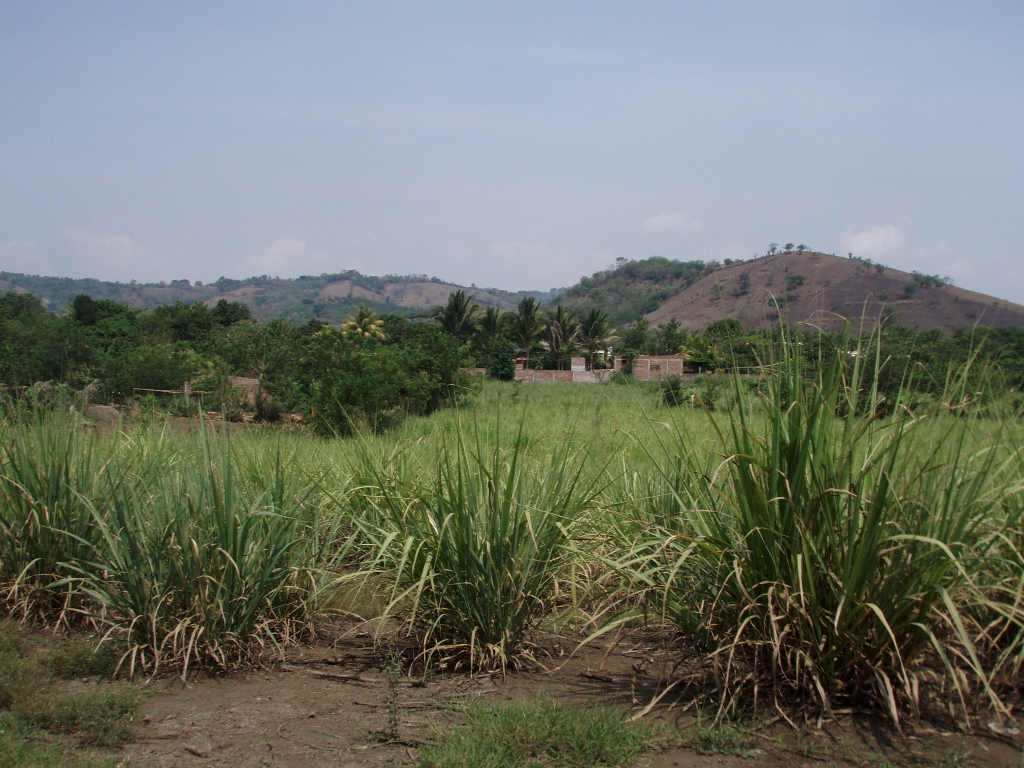 Countryside in El Salvador
Countryside in El Salvador
So I first went to the village Joya de Cerén where I bought a soft drink as refreshment and in order to boost up my low blood pressure, and then I continued with my walk. The road took me beside a local cemetery and I thought it was worth taking photos of, since graveyards also reflect the culture of a nation.
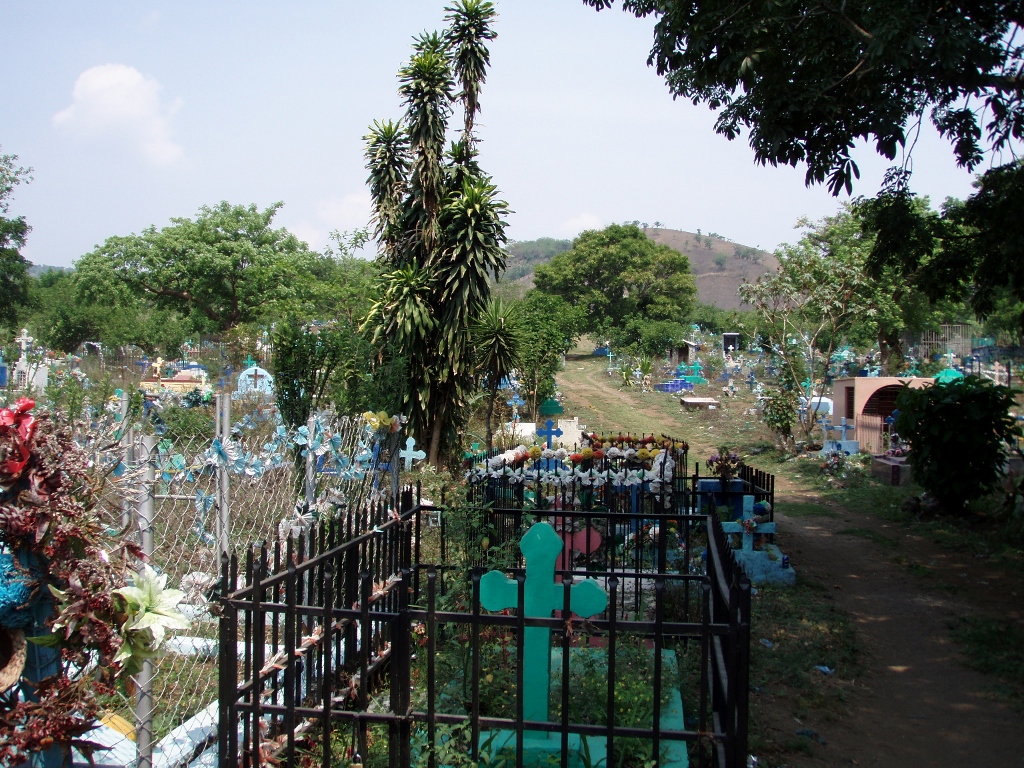 Local cemetery in the countryside of El Salvador
Local cemetery in the countryside of El Salvador
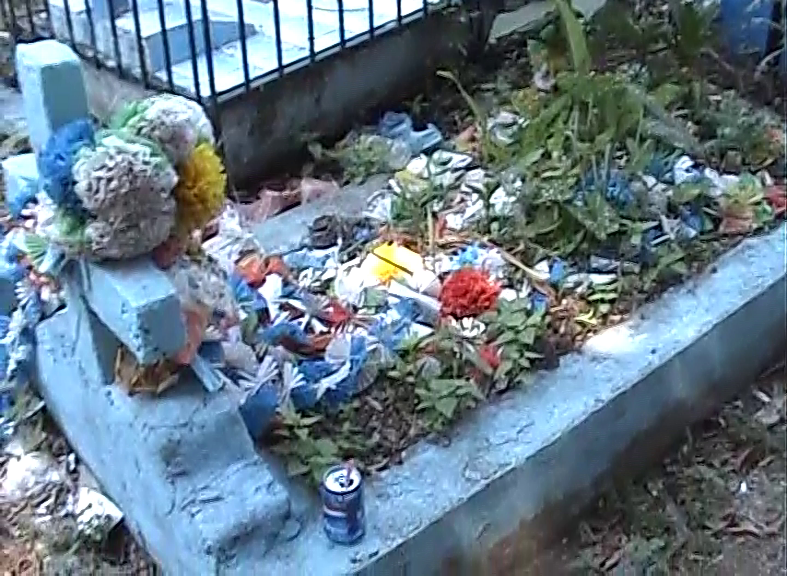 Details from a local cemetery somewhere in the countryside of El Salvador
Details from a local cemetery somewhere in the countryside of El Salvador
After this nice walk I finally reached my destination and that was the archaeological site Joya de Cerén. This is the only cultural property in El Salvador that is included in the UNESCO’s World Heritage List. In one of my early texts I explained why in my travels I use this list as a reference and now I also suggest that you read that very short text (https://www.svudapodji.com/en/unescos-world-heritage-list/).
As for this site, around the year 600 CE there was an eruption of one of the nearby volcanoes. This was a smaller volcano called Loma Caldera, which means “the boiler hill,” and it is in fact a side part of large volcano San Salvador, 1893 metres high, that is located exactly between the city of San Salvador and the Joya de Cerén site.
During this eruption, some 4 to 6 metres of volcanic ash fell on a local Mayan settlement. The temperature of the volcanic ash was between 100 and 500 degrees C and such situation led to the “freezing” of everything that was under the ash. In 1976, the construction of grain-storage silos started here and the construction workers accidently stumbled across the remains of a structure made of clay. The excavations started more seriously only in 1989 and have been going on practically incessantly since then. Of course, I was here in 2008 and certainly there are differences in comparison to the present state, but what I saw then was very interesting indeed.
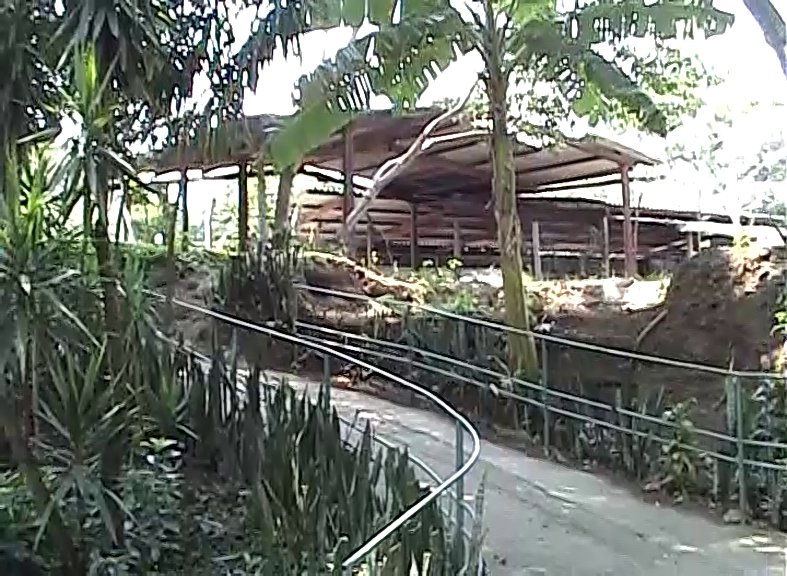 Archaeological site Joya de Cerén
Archaeological site Joya de Cerén
As opposed to all those Mayan cities where the imposing structures made of stone have survived to a larger or a lesser degree, this is a settlement that was inhabited by farmers who also belonged to the ancient Maya civilisation. Thus, the discovery of this site on the basis of which it is possible to glance at the life of “ordinary” inhabitants of Mesoamerica is of major importance for the researchers, since this is the only site of this type in Central America. Because of this significance, the archaeological site Joya de Cerén is compared to Pompeii and Herculaneum in Italy, but there is also one very important difference. No human remains have been found here and therefore it is presumed that the residents managed to flee on time.
What has been discovered, in addition to the structures, are pottery, tools, plants, seeds, animal remains, etc., and because of that fast settlement of the volcanic ash, everything is in a very good state. The researchers could even establish which plants were grown, which farming techniques were used, which type of meat was consumed, they could see the difference between flower and vegetable gardens, and also which were the dominant crops that were cultivated – maize, squash, manioc, beans, guava, agave, chilli peppers and cocoa, as well as medicinal plants.
The site is divided into three zones. When they are visited walking along elevated and fenced off platforms, certainly the most striking are the remains of old structures. Thus I first came across Structure 4 in Zone 3. When preparing this text, I looked at the more recent photos from the site on the internet and it is precisely in the case of this probe that it is possible to see how much has been dug out in the meantime around the structure that can be seen in the photo below.
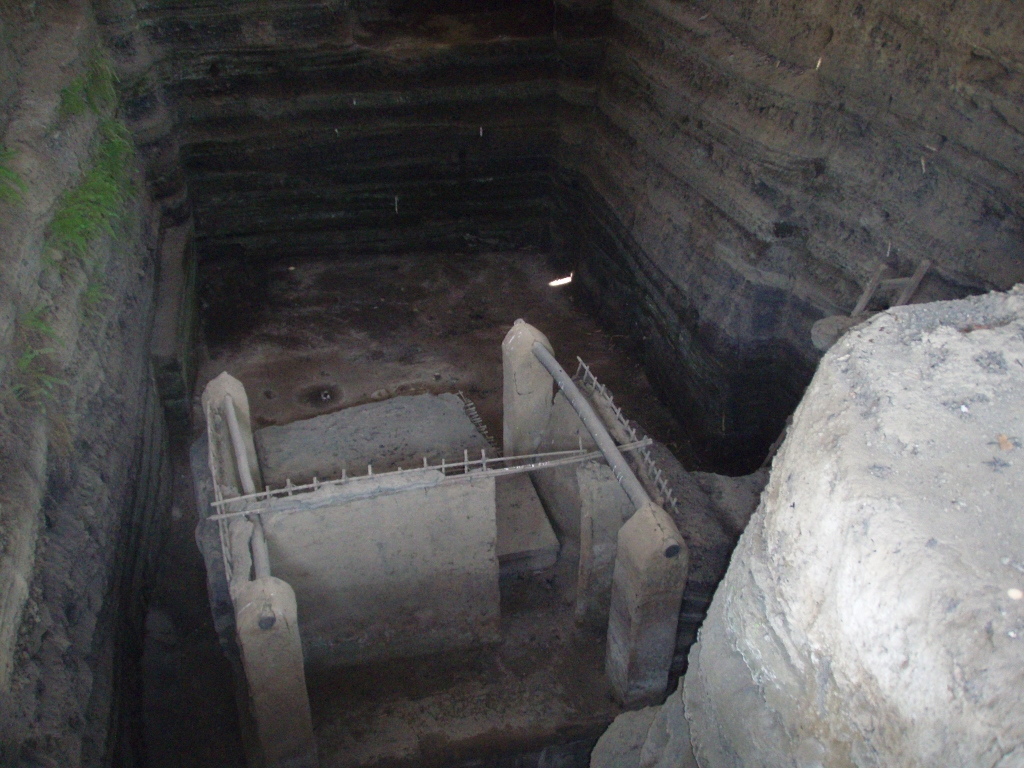 Joya de Cerén – Structure 4, in 2008
Joya de Cerén – Structure 4, in 2008
Here, on the opposite side of the probe I also noticed a pretty bird. The photo is a little blurred, but I’m fond of it nonetheless since it is still possible to see all the picturesqueness of the turquoise-browed motmot (Eumomota superciliosa).
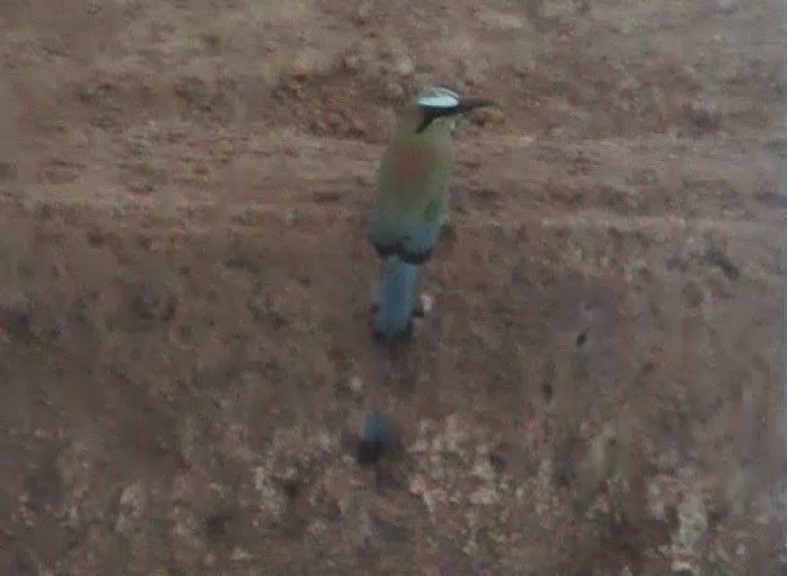 Turquoise-browed motmot
Turquoise-browed motmot
The next thing I came across was Structure 3, also in Zone 3, that can be seen in the following photo. One should bear in mind that the walls were made of mud and timber, specifically of wattle and daub that are highly earthquake resistant, but after the numerous centuries spent under the cooled down volcanic ash everything is very much hardened and appears as if made of stone.
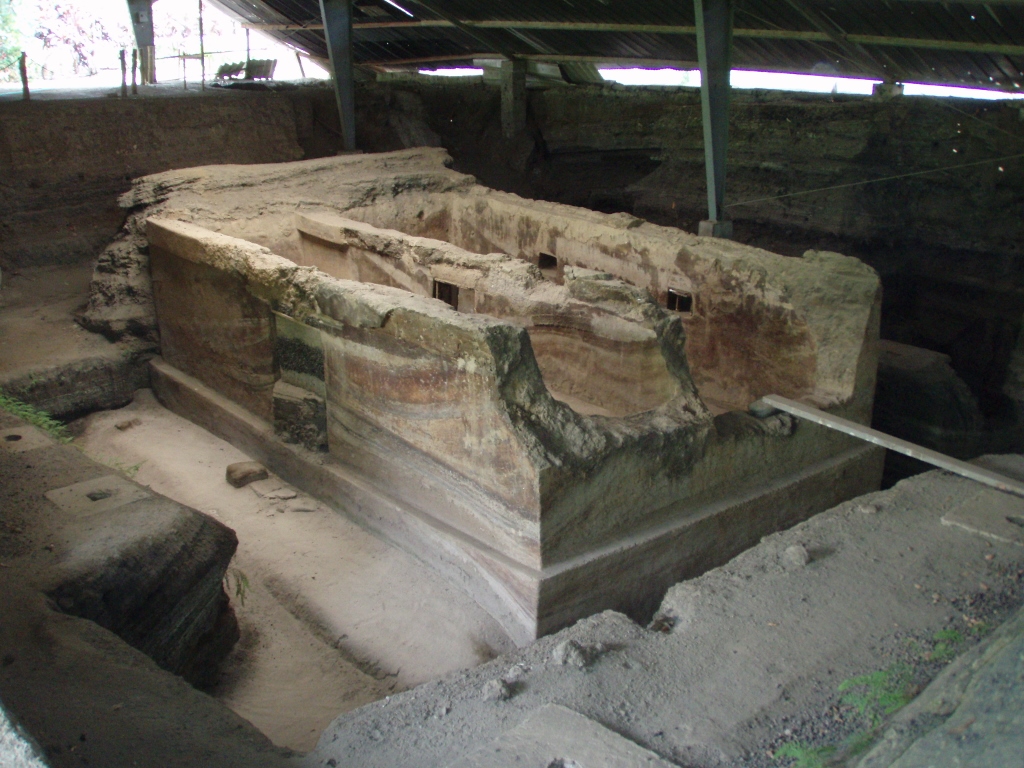 Joya de Cerén – Structure 3, in 2008
Joya de Cerén – Structure 3, in 2008
Structure 3 is also the biggest house within the archaeological site (at least it was in 2008) and it is precisely in its case that it is possible to see some specificities. The house has two rooms. In one there are two beds, while in the other there are two niches used in order to get some light and when candles are put there they light up the room quite nicely.
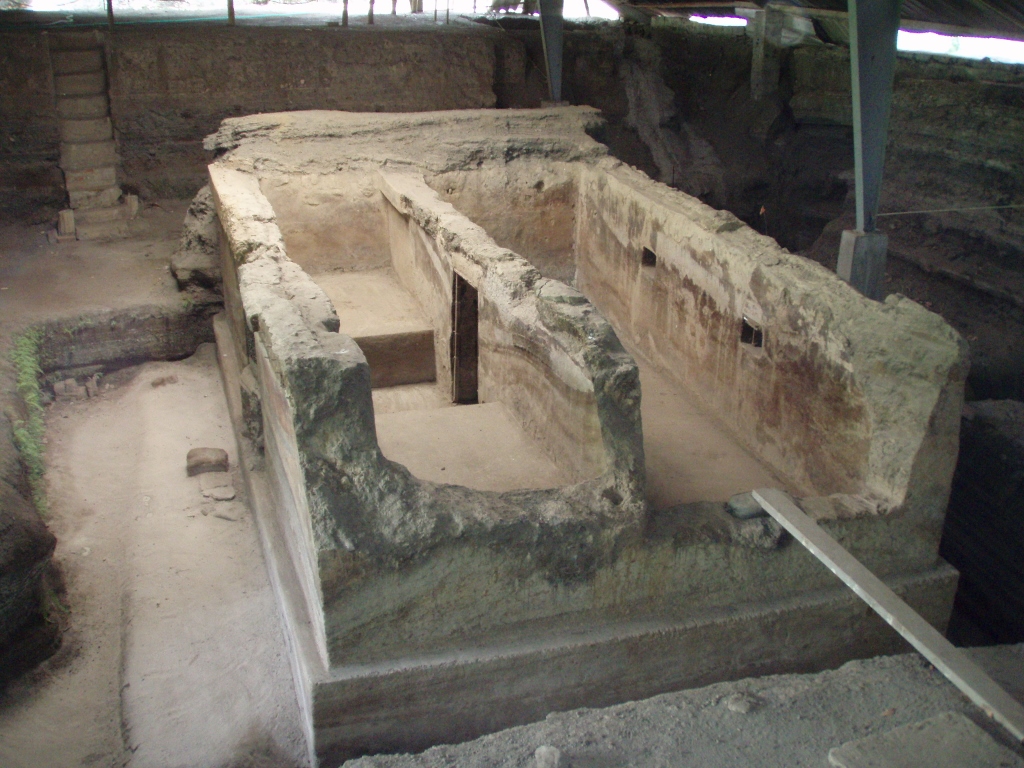 Joya de Cerén – Structure 3: the room with beds is to the left and in the wall on the right hand side one can see dark niches
Joya de Cerén – Structure 3: the room with beds is to the left and in the wall on the right hand side one can see dark niches
But the “bedroom” also had its own niches (I guess for bedtime reading) and this can be seen very well in the following photo.
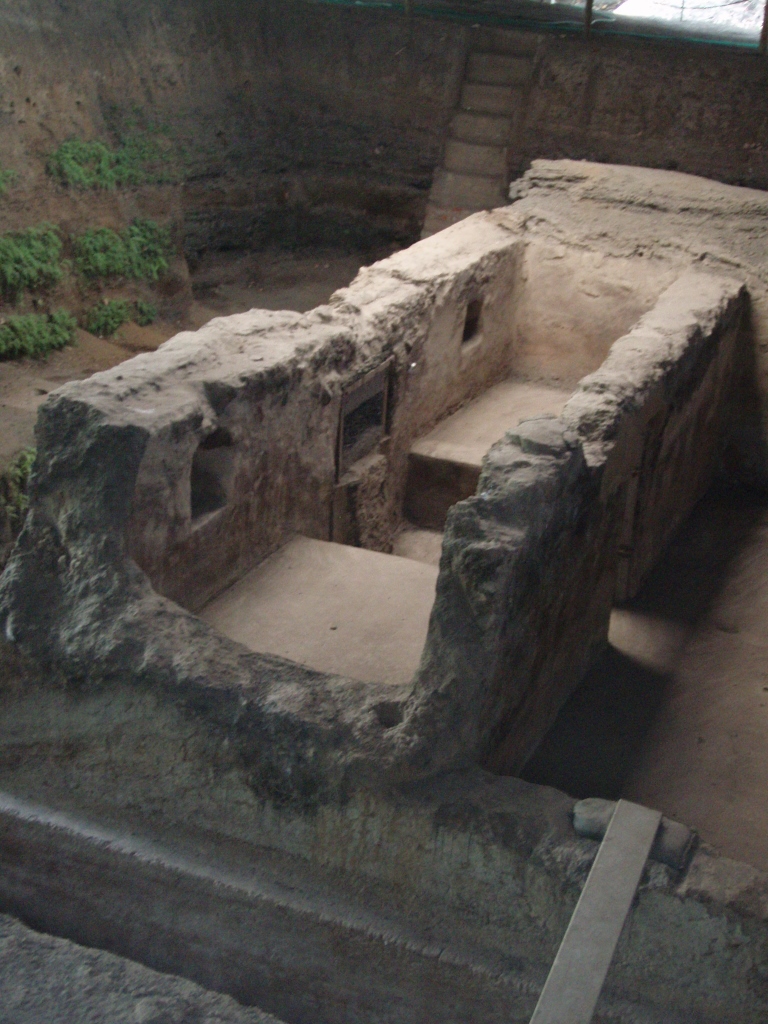 Joya de Cerén – Structure 3: the room with the beds, with the niches seen in the wall
Joya de Cerén – Structure 3: the room with the beds, with the niches seen in the wall
After this, in the course of my sightseeing I also went to Zone 2.
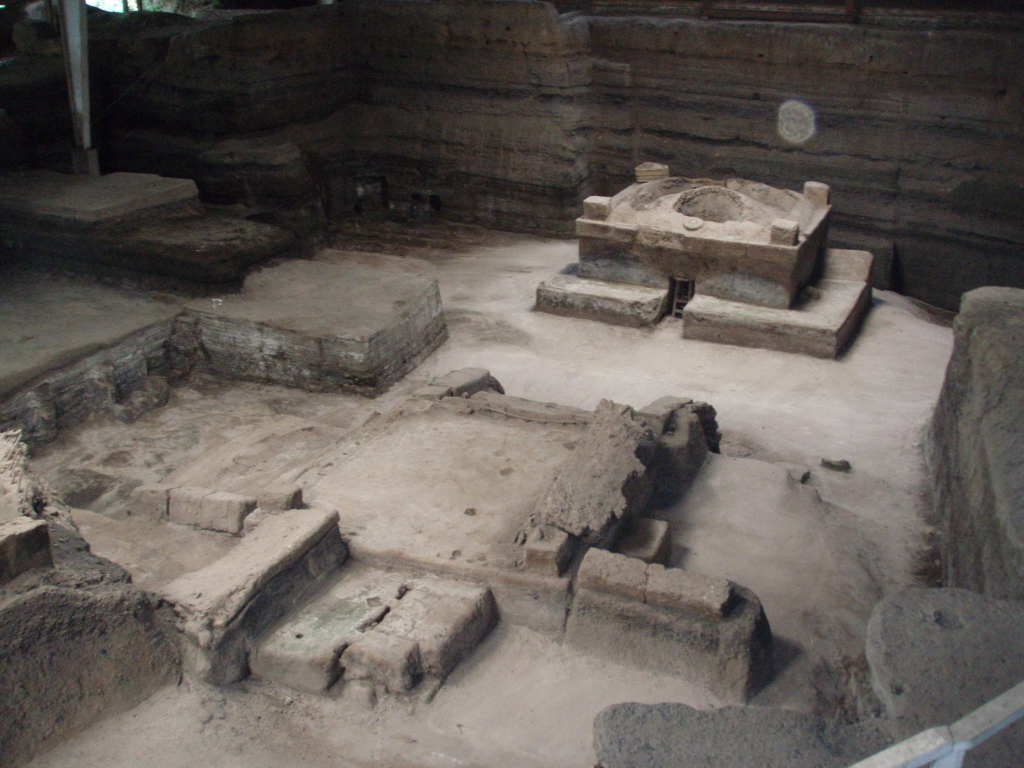 Joya de Cerén – Zone 2: Structure 7 and Sweat Lodge
Joya de Cerén – Zone 2: Structure 7 and Sweat Lodge
One should not assume by any means that because this was an agricultural settlement in rural Mesoamerica that there was not a clearly pronounced culture of habitation and that there were no civilisational attainments. Thus, within Household 2 there is a trash pit, as well as a sweat lodge (temazcal).
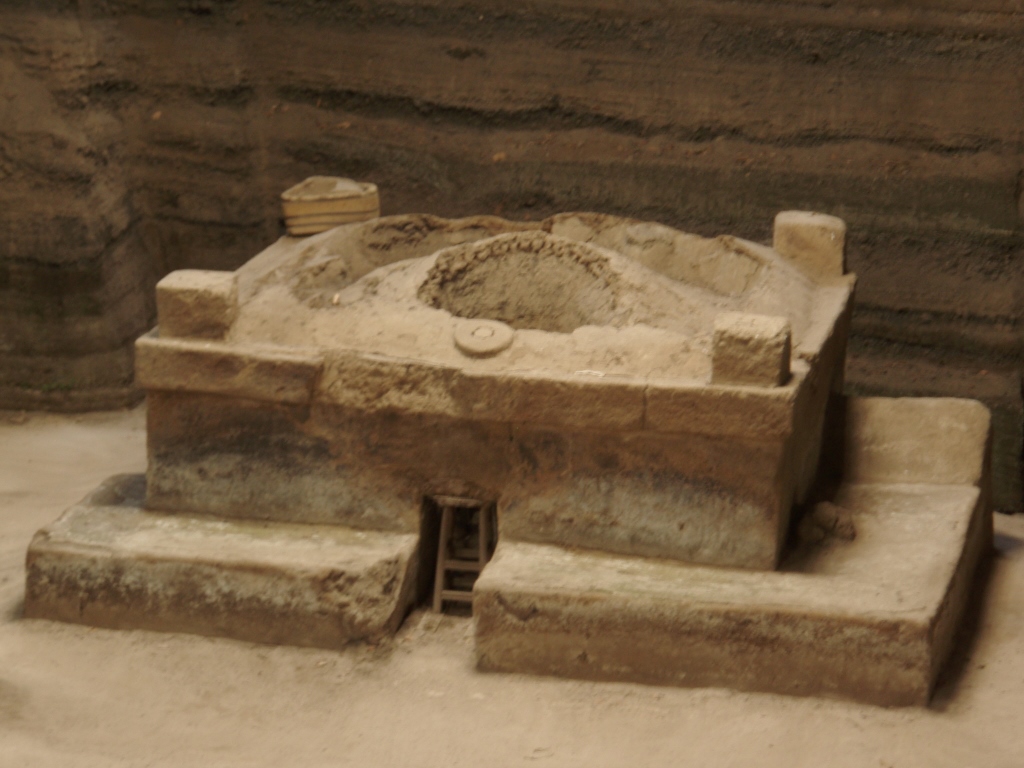 Zone 2: Sweat Lodge or Temazcal
Zone 2: Sweat Lodge or Temazcal
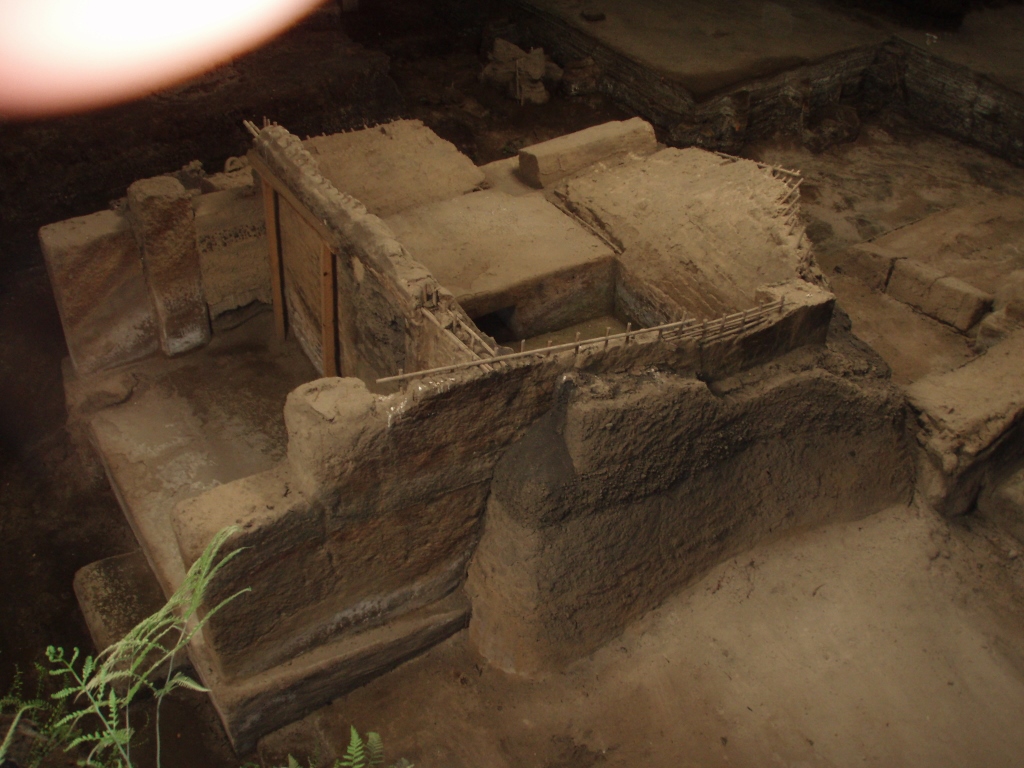 Zone 2: Structure 2
Zone 2: Structure 2
Then I got to Zone 1. From the spot from which I made the following photo, one first sees Structure 11 that has a circular ground plan and right behind it is Structure 10.
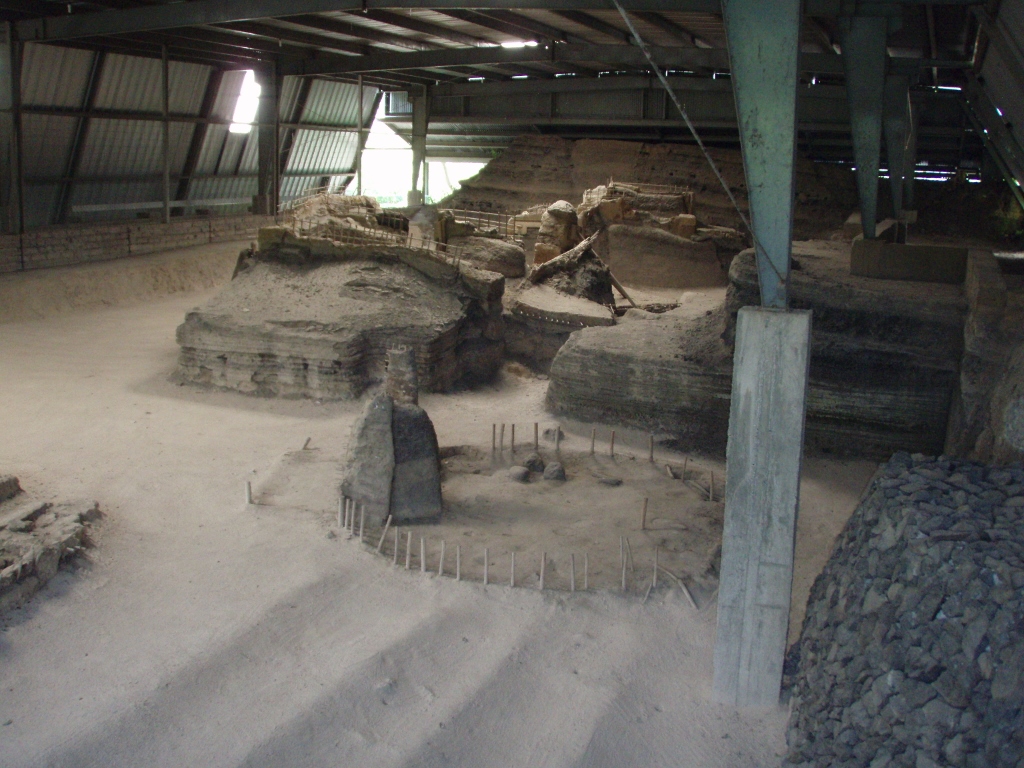 Zone 1: Structure 11 and Structure 10
Zone 1: Structure 11 and Structure 10
Large Structure 10 that can be seen in the photo above is in fact a building with several rooms and a lot of corridors. On the basis of the vessels and other objects found here, the archaeologists have concluded that this structure was used during festivals, that is, for ceremonial purposes.
Within Zone 1 there is Structure 1, known also as Household 1, and that structure has been completely dug out.
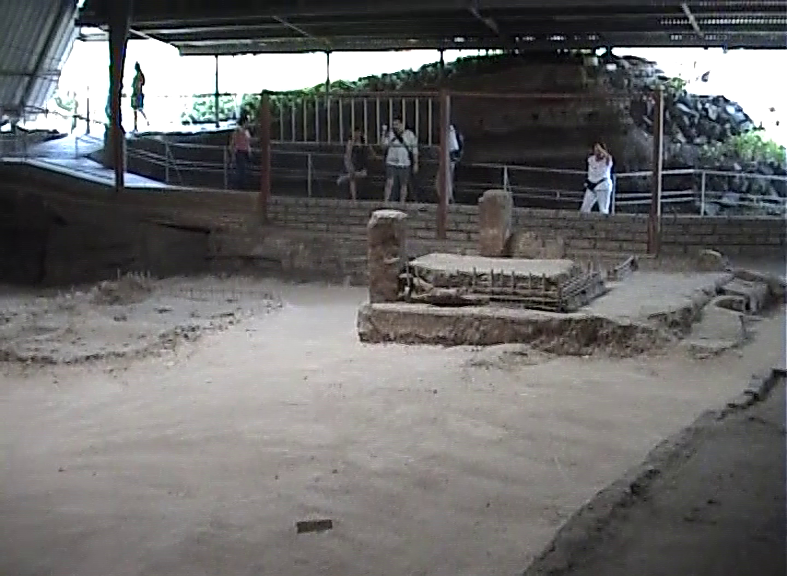 Zone 1: Structure 1 and also the passageway-platform from which the site may be observed
Zone 1: Structure 1 and also the passageway-platform from which the site may be observed
When I got to the end of the walking platform, I could better see Structure 12 which I remember in particular since the pattern used in its decoration reminds me of Chan Chan site in Peru (https://www.svudapodji.com/en/lima-and-north-peru-peru-and-bolivia-summer-of-2005-part-3/).
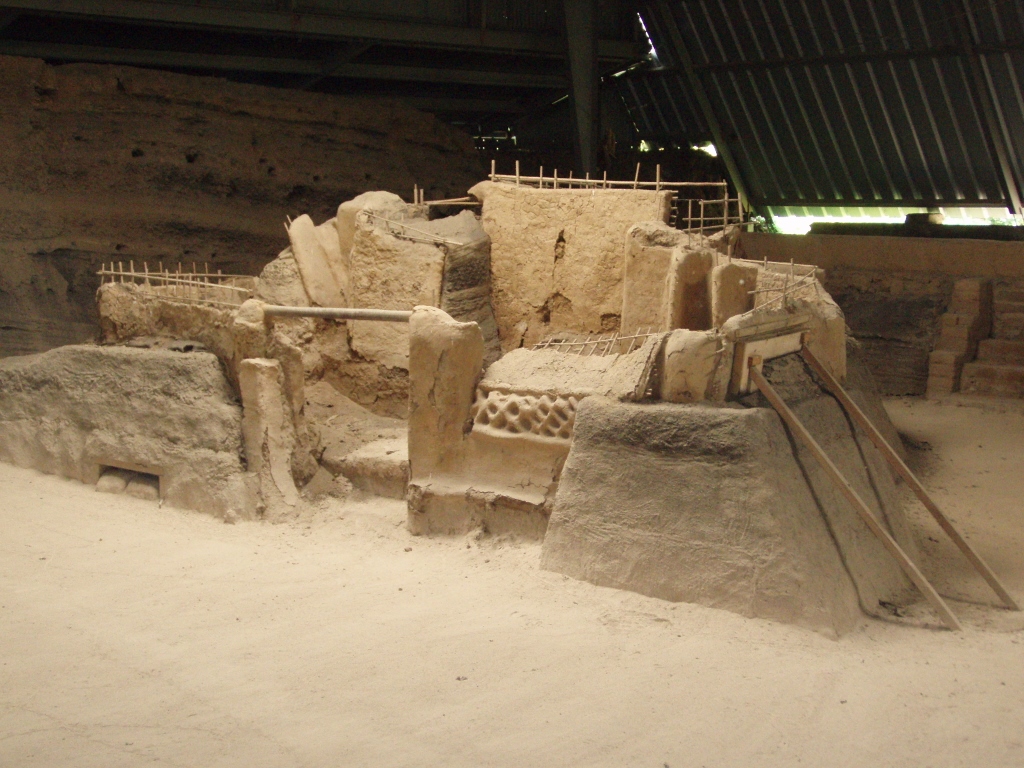 Zone 1: Structure 12
Zone 1: Structure 12
The archaeologists also presume for Structure 12 that it was used for religious purposes, just like Structure 10 that is situated some 5 metres farther away.
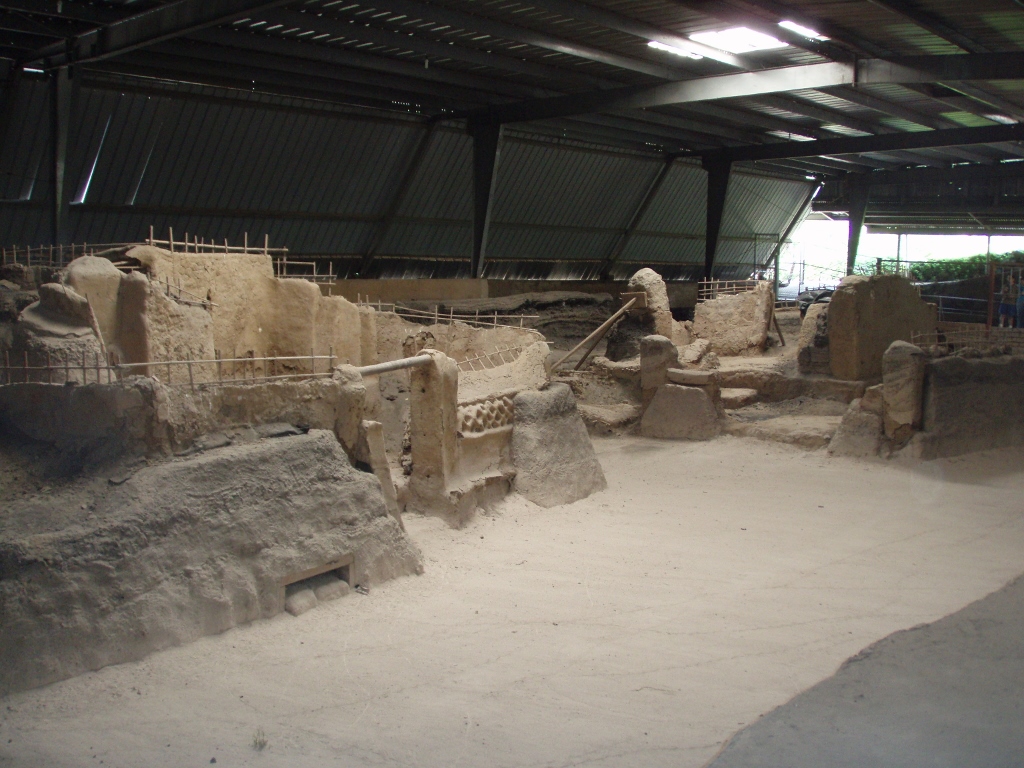 Zone 1: Structure 12 is to the left and Structure 10 is to the right
Zone 1: Structure 12 is to the left and Structure 10 is to the right
This was also where I completed my visit to archaeological site Joya de Cerén, so I headed to the main road to catch a bus back to San Salvador. Returning to the city, from the bus I saw a remarkable scrapyard. I was particularly impressed by the two upper stories where vehicle body parts were arranged as neatly as books on a shelf.
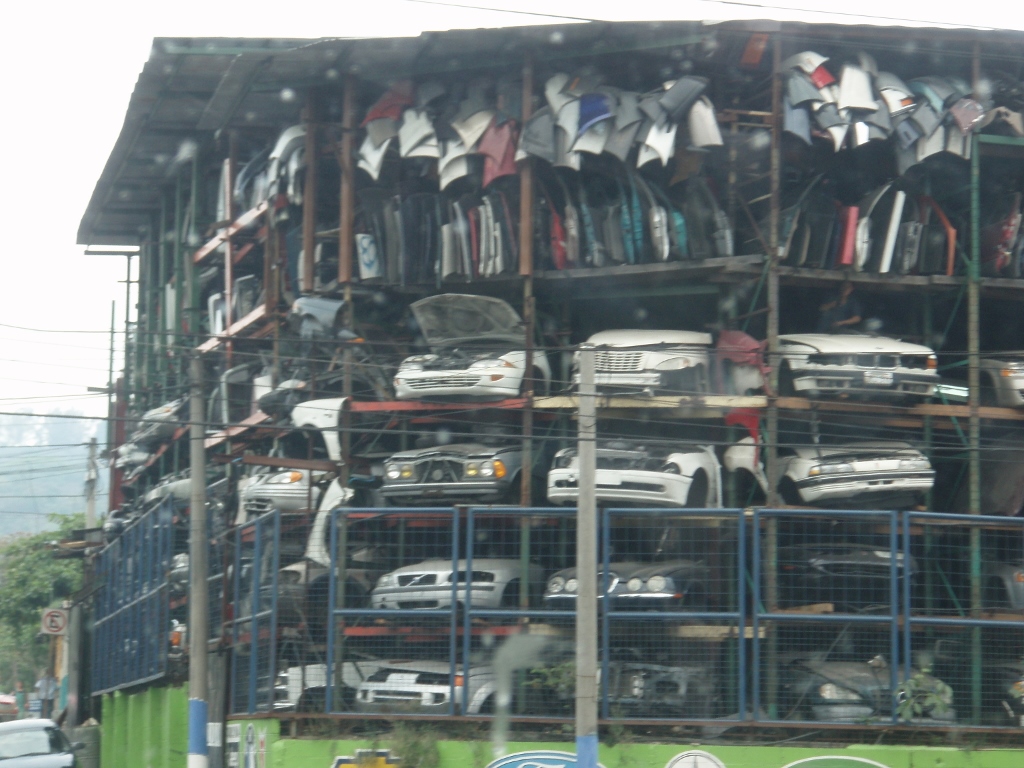 Scrapyard in San Salvador
Scrapyard in San Salvador
Originally I planned on visiting the city a little, but this had to be adjusted to the given circumstances. Namely, in the meantime I had to face the "female technical issues" earlier than usual, so I had to deal with this, without actually going back to the hotel. So, from the bus terminal I headed for a part of the city with large shopping malls and numerous fast food restaurants – it was as if I were in the USA. After all, when I was walking along an overpass in this more modern part of San Salvador, almost everything was as if I were in any bigger city in Europe or North America.
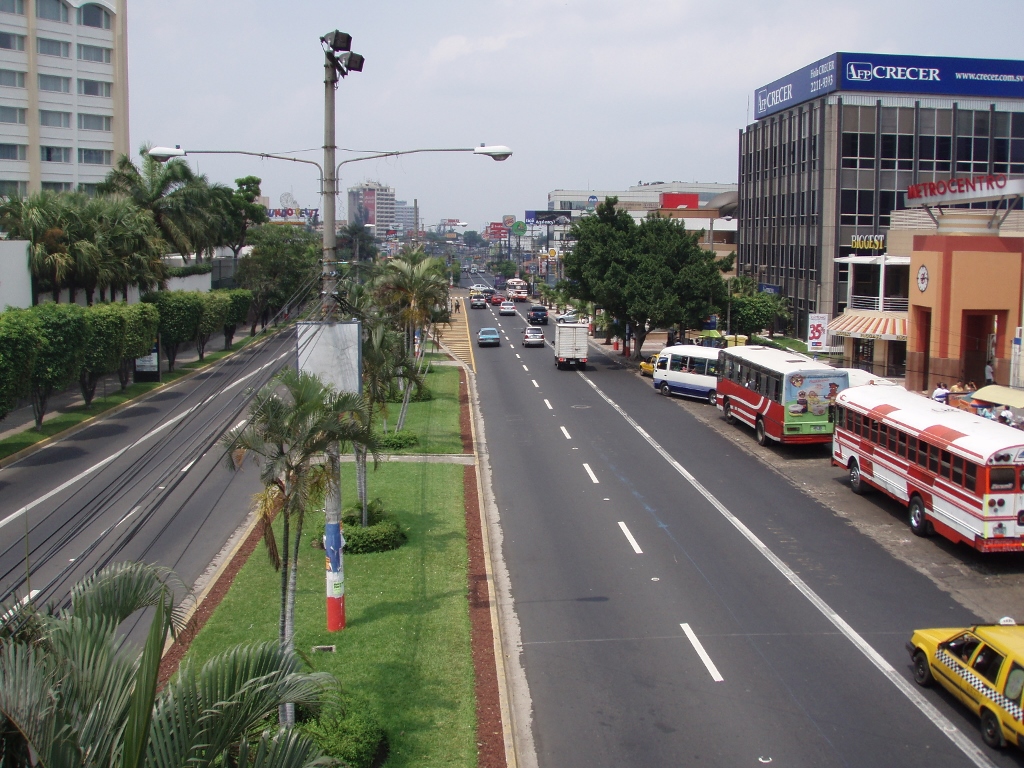 More modern parts of San Salvador
More modern parts of San Salvador
I actually needed a supermarket, as well as a well kept toilet. Both of these can be found in shopping malls and the “problem” was solved soon. I was also a little hungry, so I went to a local restaurant, since by the rule I don’t eat fast food (from restaurants). When I prepare food fast, this is quite all right then. As my friend Velislav would say: “Then it’s not “fast food.” It’s good food made quickly.”
By the time I had finished with all of this, I realised I was also a little tired and not particularly in the mood to do any major sightseeing and so I decided just to walk towards my hotel. After all, the hotel was in the centre of the city and although that centre was not as neat as the part of San Salvador in which I was currently, some of the very important buildings were located there.
This walk took a little less than an hour and frankly speaking I remember only some inconspicuous streets that I went through along the way. I took a photo of one such street, but in it, a little farther, it is possible to see the towers of the Sacred Heart Basilica (Basilica Sagrado Corazon) built in 1913. There is an interesting story about this church for which the parts were made elsewhere, but were by mistake shipped to San Salvador in Brazil first and only later they got here.
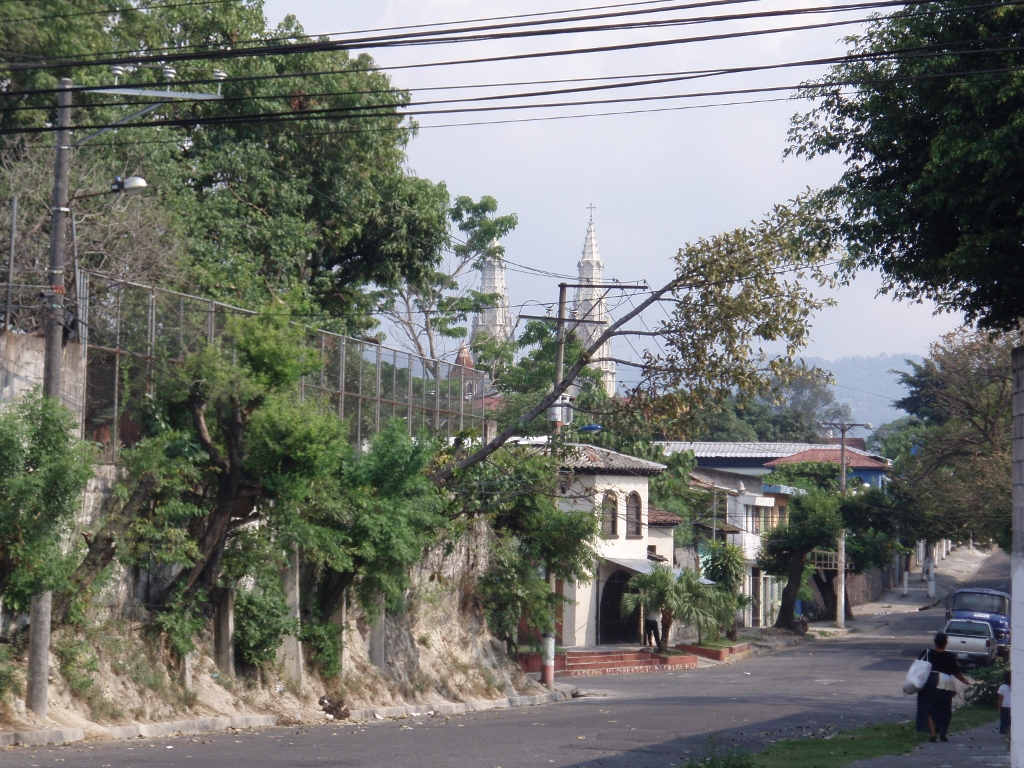 An inconspicuous street and the towers of the Sacred Heart Basilica
An inconspicuous street and the towers of the Sacred Heart Basilica
But, here I was no longer interested in any more detailed sightseeing, contenting myself by what I could see from the outside. And when I got close to the centre of the city, there was a lot to see. To start with, I was walking along a street that was full of shops, while in front of them there were numerous stands. It was very crowded.
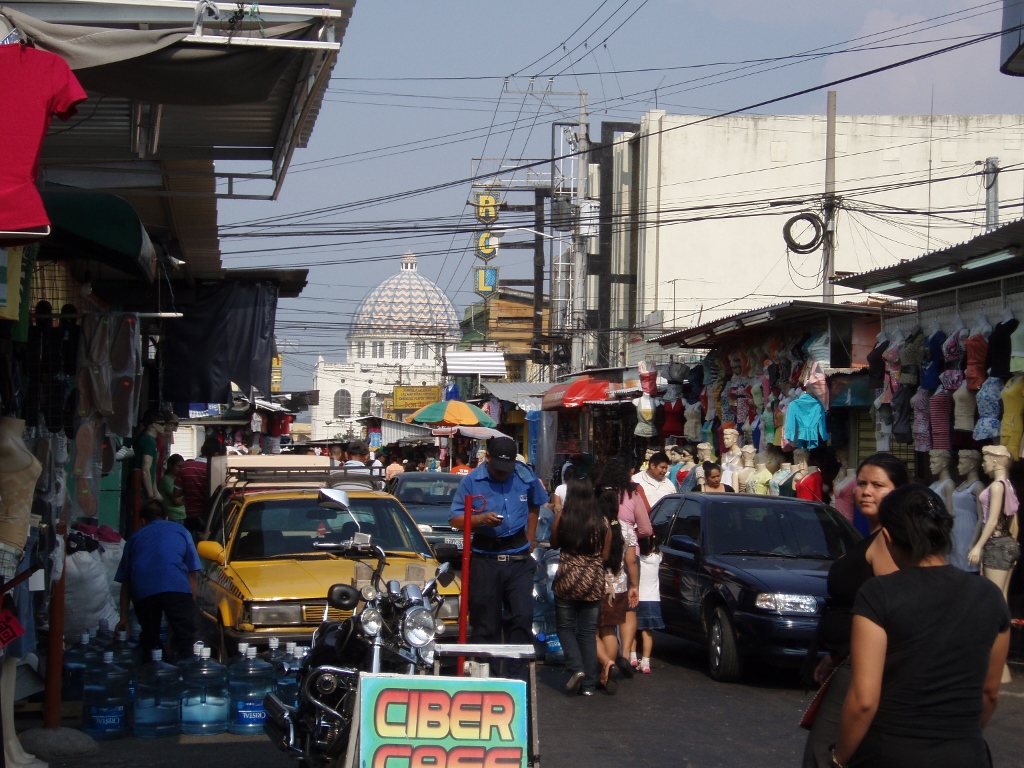 Centre of the city; the dome of San Salvador’s Cathedral can be seen in the distance
Centre of the city; the dome of San Salvador’s Cathedral can be seen in the distance
Soon I got to a spacious square at which there is the National Palace (Palacio Nacional). The current building of the National Palace was constructed between 1905 and 1911 instead of the previous one that was destroyed in the fire of 1889.
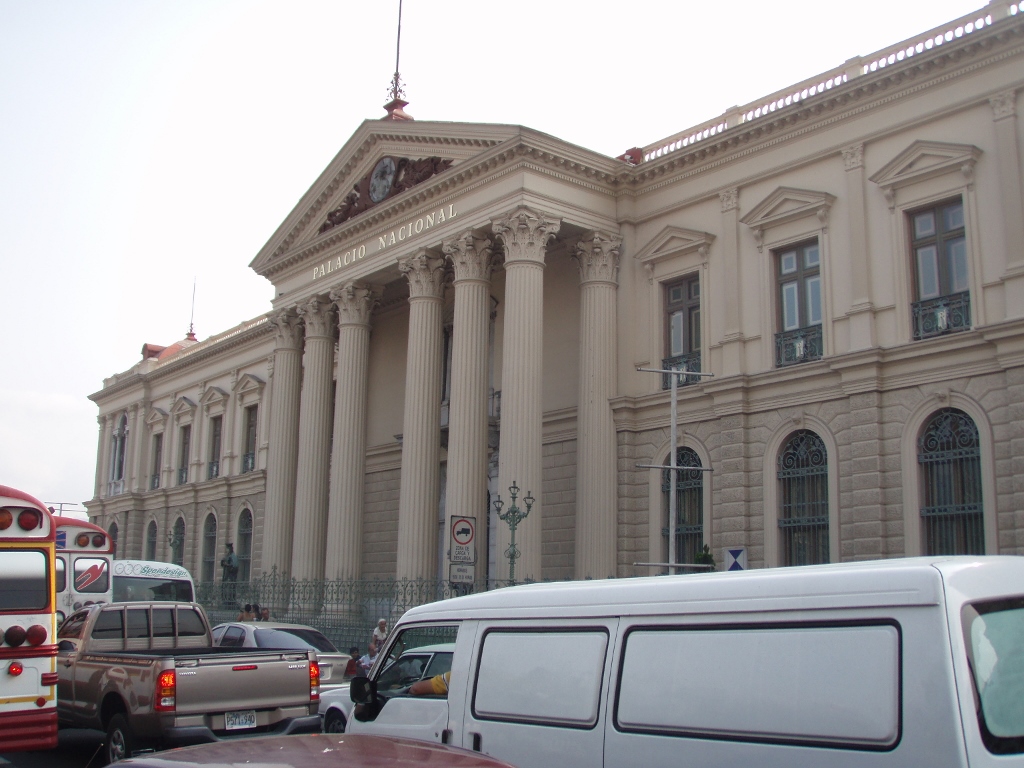 National Palace
National Palace
At the same square there is San Salvador Cathedral (Catedral metropolitana de San Salvador). In the meantime, the colours of its facade have been changed, but I really liked it such as it was when I saw it back in 2008.
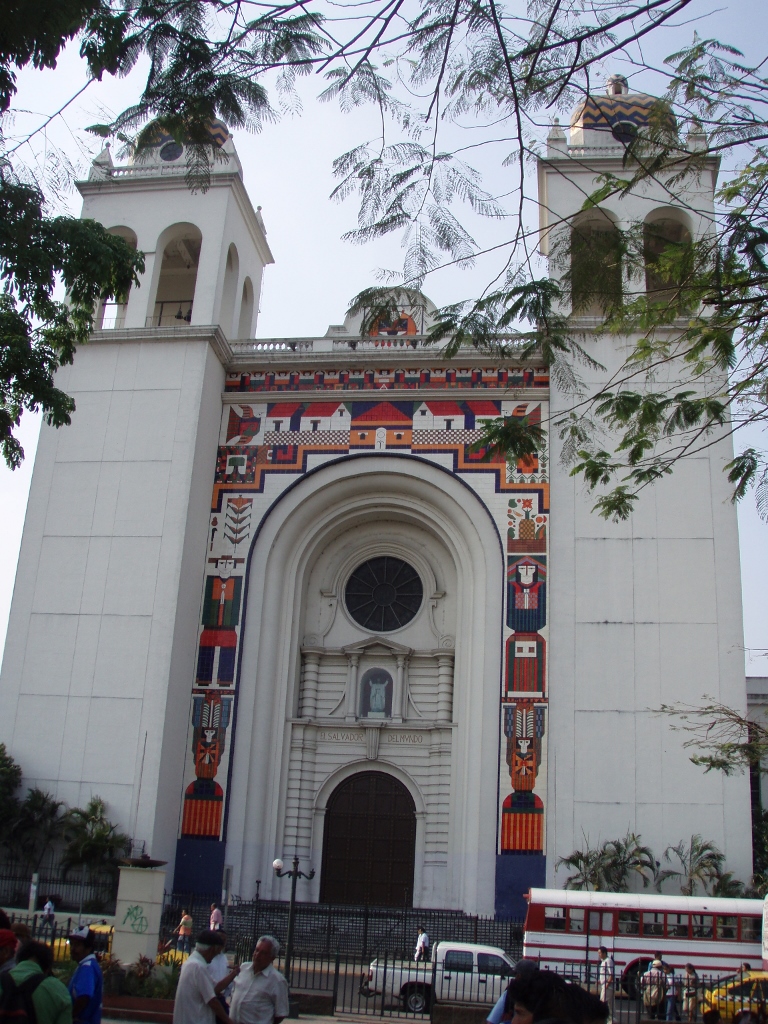 Cathedral in San Salvador
Cathedral in San Salvador
I took very few photos and made few video recordings here for I was aware that I was alone and it was quite crowded around me. That’s why I stopped only rarely, quickly taking photos or filming what I was interested in.
It was like that also in front of the entrance into the National Theatre. What caught my eye in particular here were stands with female underwear placed RIGHT in front of the very entrance into the National Theatre.
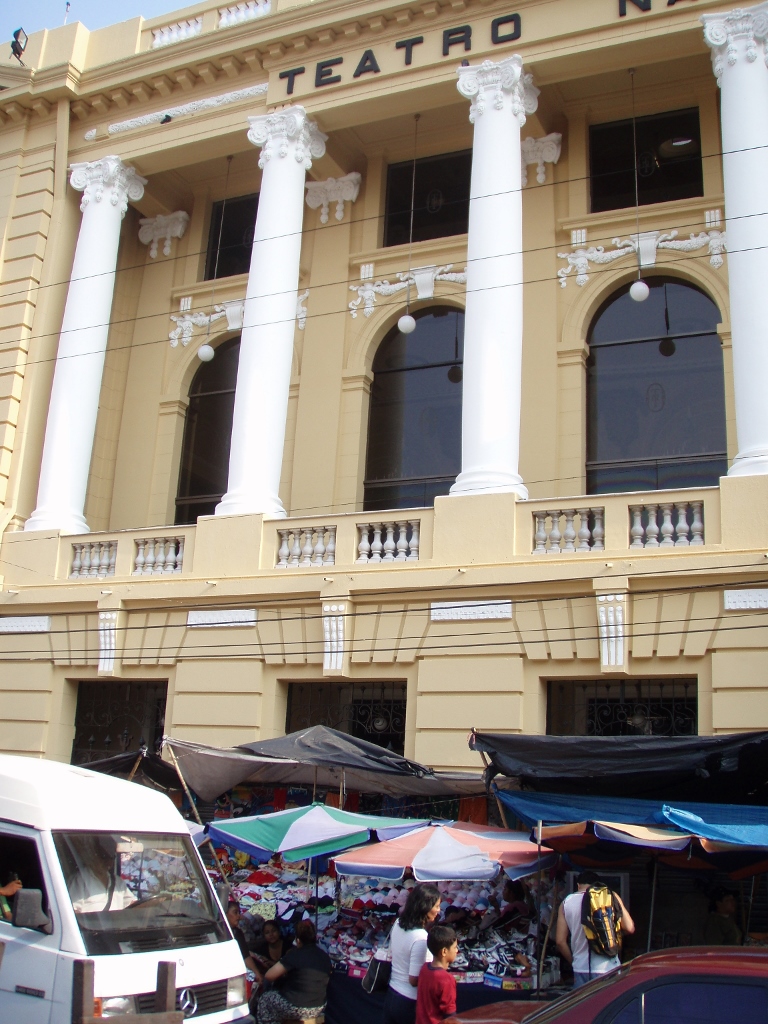 In front of the National Theatre in San Salvador
In front of the National Theatre in San Salvador
While walking around, I was slightly taken aback not only by the large crowds, but also by a lot of noise, primarily in the form of different music played through loud-speakers by seemingly everybody. I don’t know if there was some special holiday in San Salvador these days (it was 2 May), but it was really incredibly lively in the streets. And so, when I got to the Liberty Plaza (Plaza Libertad) I had to yell while filming with my video-camera and this all somehow made me additionally tired. That’s why I no longer wanted to walk around the centre even to cross the square and visit El Rosario Church (Iglesia El Rosario) the construction of which was completed in 1971. From the outside, the church may not appear too attractive, but because of its interior it is considered as one of the most beautiful churches in Latin America. In my travel stories, however, it is possible to see only its exterior appearance from afar. For the rest of it, one should go either on the internet or to San Salvador.
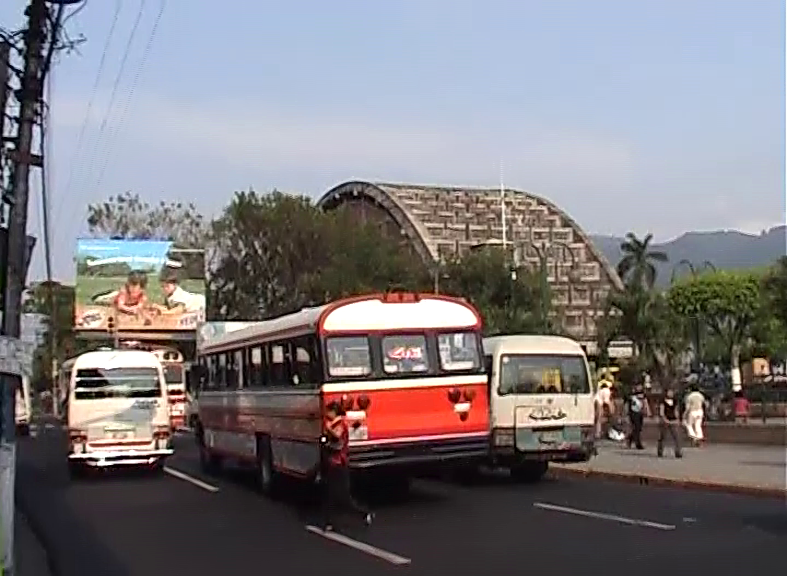 Concrete construction of El Rosario Church
Concrete construction of El Rosario Church
Here I definitely finished with my sightseeing of San Salvador and so I went in the direction of my hotel. But, when I got to that area I also walked past the restaurant where I had had dinner the night before and which had seemed so scary and dangerous then. The same woman worked in it this time and now, in daylight, everything seemed different. In other words – not even slightly dangerous, but quite pleasant and safe. I asked the lady to take photos and she not only gave me such permission very kindly, but also posed for me.
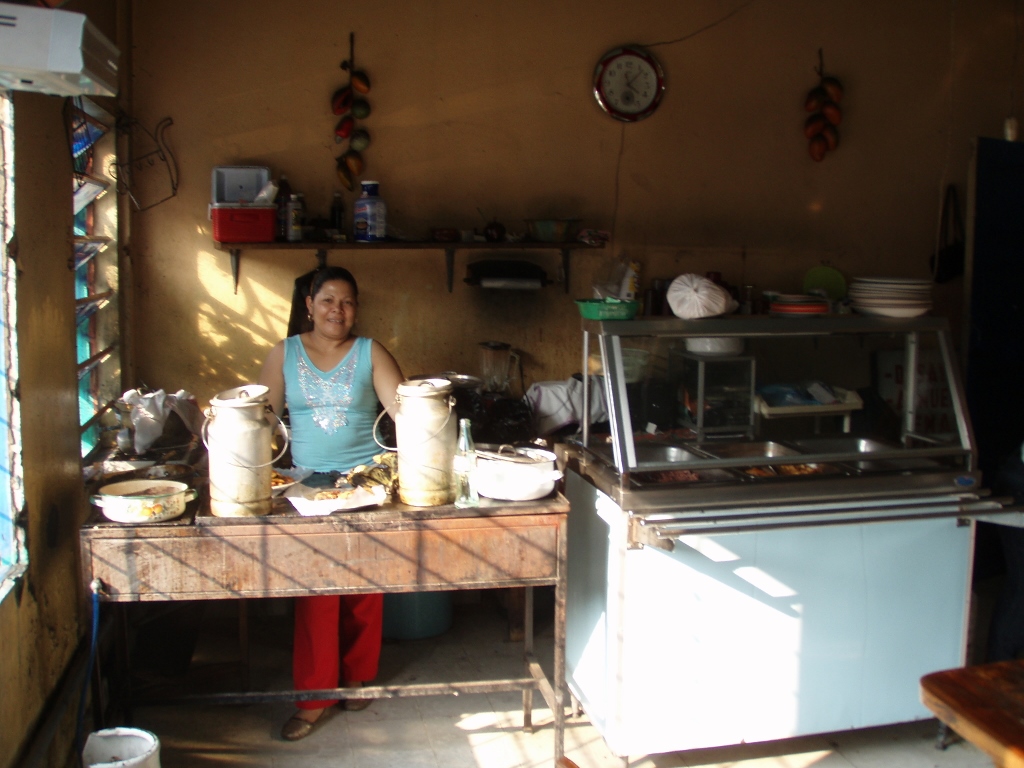 Kitchen part of the restaurant
Kitchen part of the restaurant
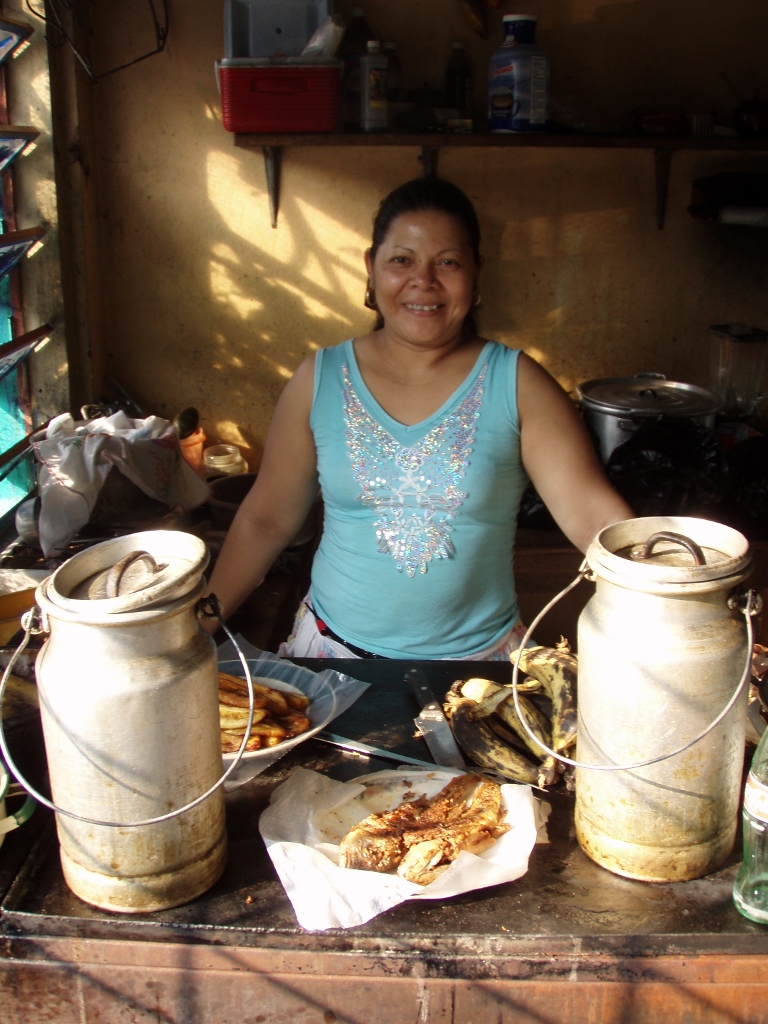 Kind lady working at the restaurant
Kind lady working at the restaurant
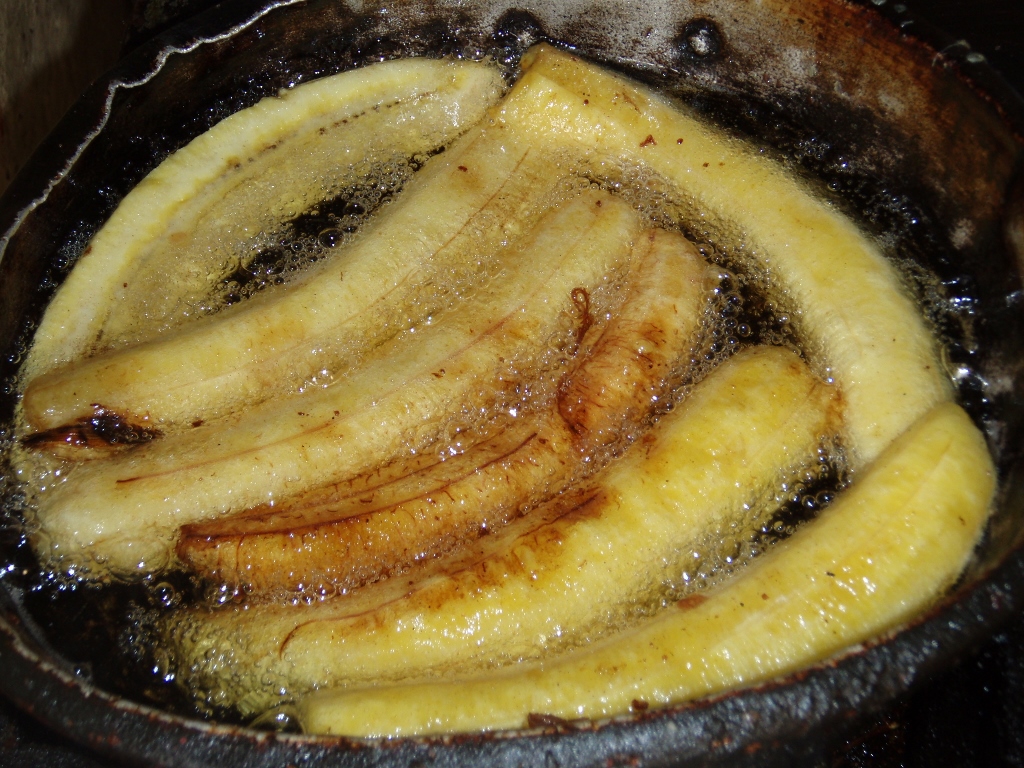 Among other things, this evening the menu offered fried plantains
Among other things, this evening the menu offered fried plantains
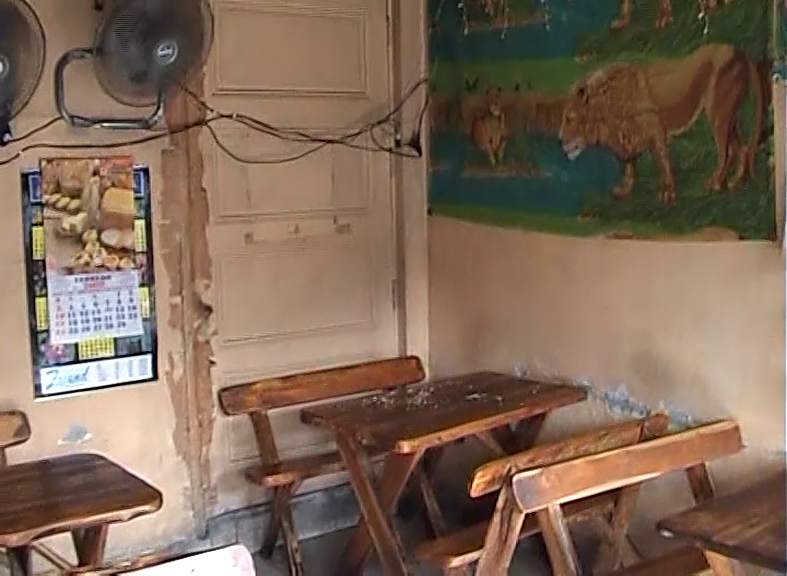 “Dining” section of the restaurant
“Dining” section of the restaurant
But, I was still full from the lunch I had earlier, plus I had already come up with the idea of what I would do that evening as far as food was concerned. Namely, in one of the shops along the way I bought beer and a bag of nachos. I put the beer in a hotel’s fridge to get cool, while I took the bag of nachos straight to my room.
Still, I first had shower, washed my hair and tried my new “invention.” When I was at the supermarket in the shopping mall, I also bought a yellow sponge with green scrubber. Namely, as I walked every day in my plastic-rubbery clogs, which was wonderful for my feet that could breathe freely, this also meant that those same feet of mine got dirty beyond any measure. Every evening, when I took shower, I had troubles cleaning them up properly, since the fine dust would get into the pores of my feet’s skin and that really looked unattractive. And so, it occurred to me that the best thing for scrubbing was the yellow-green sponge. I thought, if it was good for dishes, I guess it would be good for my feet, too. I can report that my “invention” is – PERFECT! Not only that it takes all the dust particles from the skin’s pores, the green part also does perfect exfoliation and so to this very day I always have a special sponge of this kind by my bathtub which I use only for my feet.
So, after I washed and cleaned myself properly, it was the time to take care of the clothes I wore that day, as well as of a couple of pieces from the day before. Since I had at my disposal those concrete washtubs, plastic basins and water for rinsing, while the women working at the hotel had left washing soap there, I started with the washing of my clothes, for I also had the clotheslines and pegs there as well.
And when I finished both with the shower and with the washing of clothes, I went down to the reception area to get my cold beer and soon I could finally relax completely. This evening I was alone in this part of the hotel, since the American I had chatted with the night before had gone that day, so I found an ideal place for me to sit and that was on the thick side of those concrete washtubs.
The evening was magical. To start with, on one side I had a great view not only at the inner yard of the hotel and the international transportation company, but also at the surroundings.
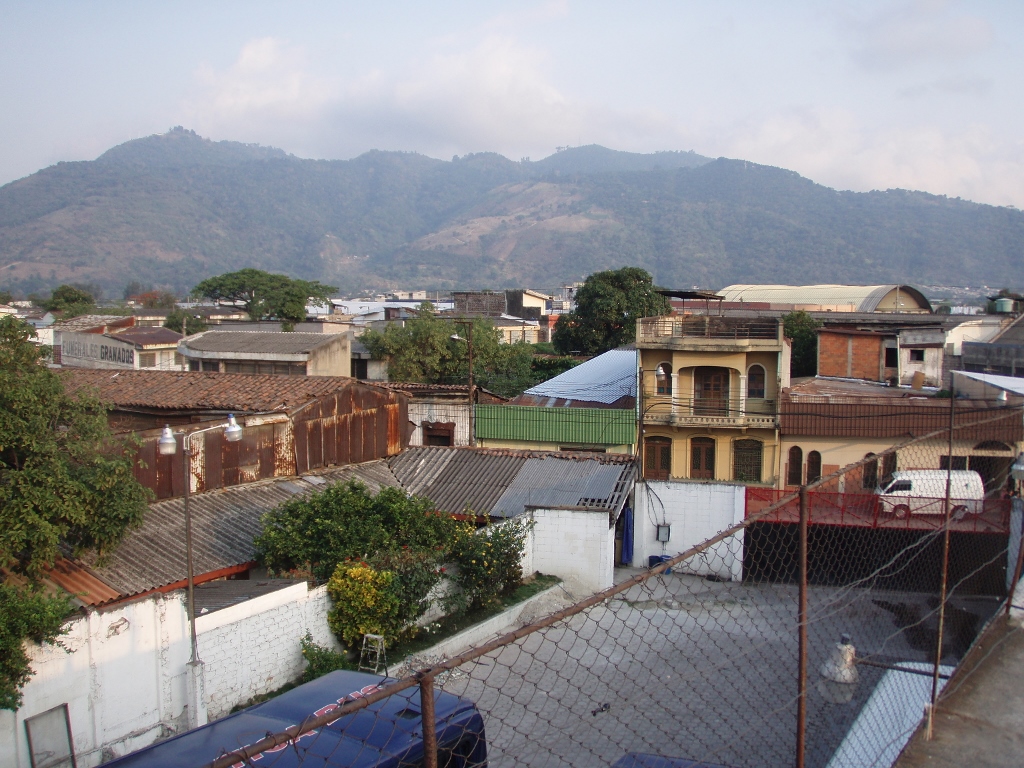 View at the inner yard and the surroundings
View at the inner yard and the surroundings
In addition, the temperature felt perfect, it was wonderfully warm, but with a light breeze which made it ideal. When I looked to the other side, a little farther away, I could see the dome and the towers of the Cathedral in San Salvador and closer to me my laundry that was getting dry. It was precisely the breeze that helped with this, for the humidity was very high, so without the help of the wind it would not get dry even until the next day.
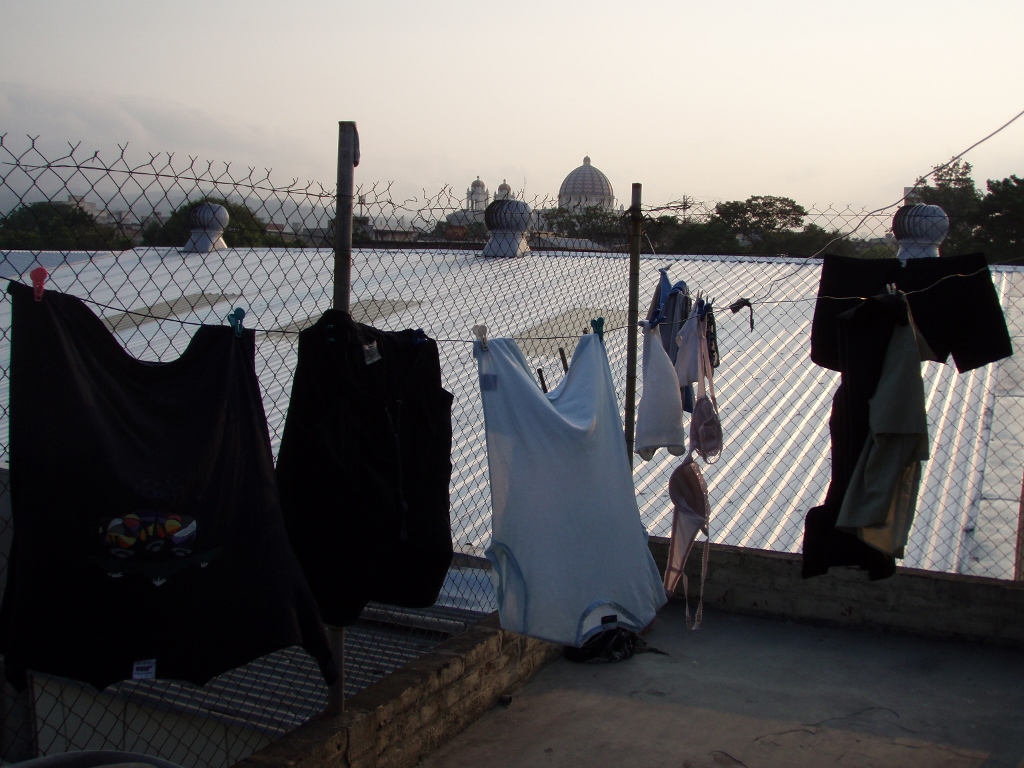 Laundry and the Cathedral
Laundry and the Cathedral
Needless to say, the beer did not last long and I actually had to drink it up quickly before it turned warm, but in combination with nachos it was ideal and in that unusual, very modest place, not only that I had completely clean feet, but I was also perfectly content, fulfilled and, if I may say – happy.
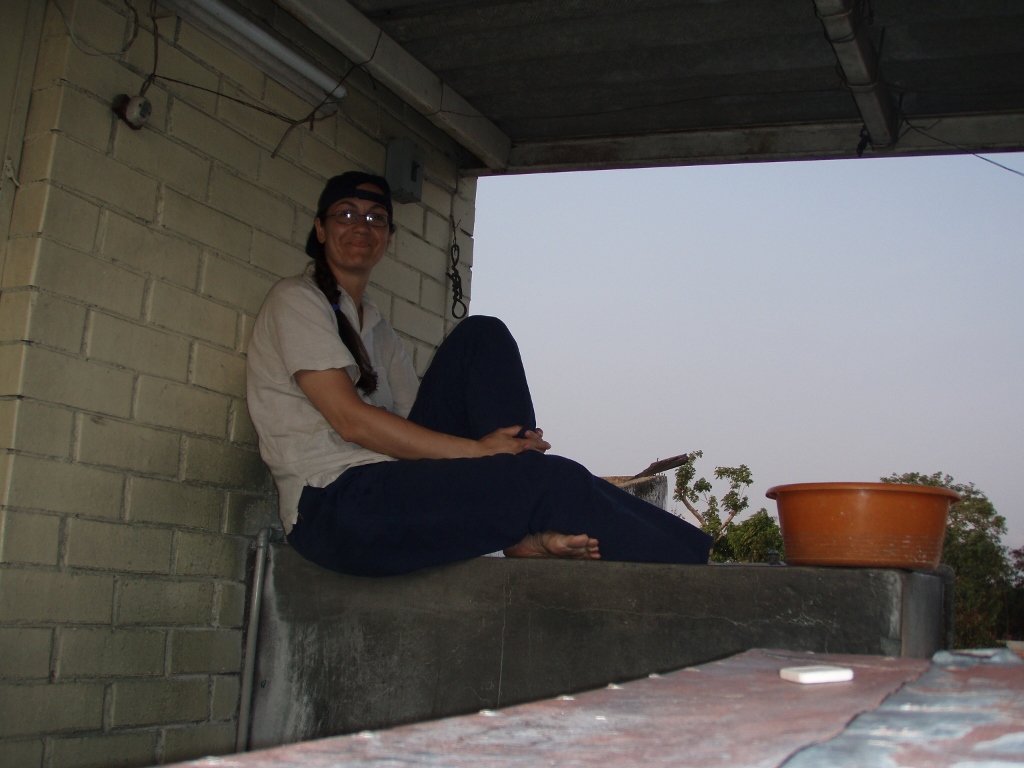 It really takes little for one to be happy, but the circumstances and details need to fit well
It really takes little for one to be happy, but the circumstances and details need to fit well
Here is the map that shows my stay in El Salvador.